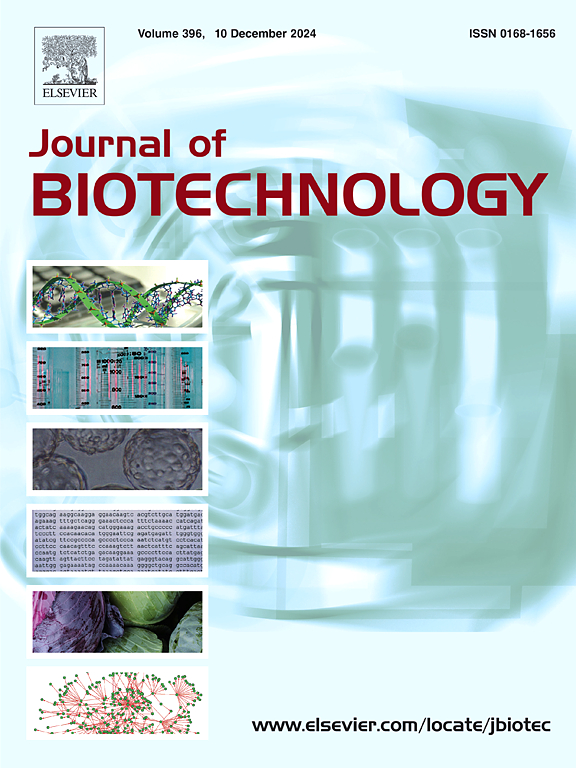Acid-triggered ultralong hydrogen release from AB-loaded hollow mesoporous silica nanoparticles enhances salt tolerance in sweetpotato
IF 3.9
2区 生物学
Q2 BIOTECHNOLOGY & APPLIED MICROBIOLOGY
引用次数: 0
Abstract
Soil salinization severely restricts crop growth and productivity worldwide. Hydrogen (H2) has demonstrated considerable potential in enhancing plant stress tolerance. However, its agricultural application is limited by the rapid dissipation of H2 in traditional electrolysis-generated hydrogen-rich water (HRW). In this work, we synthesized a nanoscale H2-releasing material (AB@HMSN) by encapsulating ammonia borane (AB) into hollow mesoporous silica nanoparticles (HMSN), achieving ultrahigh AB loading capacity (811 mg·g−1 HMSN) and acid-responsive sustained H2 release behavior in solution. The H2 release duration reached 75 h, significantly exceeding that of conventional HRW. When applied to salt-stressed (150 mM NaCl) sweetpotato (Ipomoea batatas (L.) Lam) seedlings, 16 mg·L−1 AB@HMSN significantly improved chlorophyll content, with chlorophyll a, chlorophyll b, and total chlorophyll increasing by 80 %, 100 %, and 88 %, respectively. Photosynthetic performance was markedly enhanced, showing increases of 53 %, 26 %, and 24 % in photosynthetic rate (Pn), stomatal conductance (Gs), and transpiration rate (Tr), respectively. Additionally, AB@HMSN treatment strengthened antioxidant defenses by elevating the activities of key enzymes, including superoxide dismutase (SOD), peroxidase (POD), and catalase (CAT), while reducing the accumulation of reactive oxygen species (H2O2 and ·O2-). Mechanistically, AB@HMSN induced endogenous melatonin (MT) production, which activated sodium-proton (Na+/H+) antiporters and plasma membrane proton-pumping ATPase (PM H+-ATPase) activity. This process restored ion homeostasis by facilitating Na+ efflux, K+ influx, and H+ influx, thereby enhancing salt tolerance. These findings not only advance our understanding of hydrogen-mediated stress tolerance but also offer a practical nanomaterial-based strategy for sustainable agriculture in saline environments.
负载ab的中空介孔二氧化硅纳米颗粒酸触发的超长氢释放增强了甘薯的耐盐性
在世界范围内,土壤盐碱化严重限制了作物生长和生产力。氢(H2)在提高植物抗逆性方面已显示出相当大的潜力。然而,传统的电解富氢水(HRW)中氢气的快速耗散限制了其在农业上的应用。在这项工作中,我们通过将氨硼烷(AB)包封在中空介孔二氧化硅纳米颗粒(HMSN)中,合成了一种纳米级的H2释放材料(AB@HMSN),实现了超高的AB负载能力(811 mg·g−1 HMSN)和溶液中酸响应的持续H2释放行为。H2释放时间达到75 h,显著超过常规HRW。当施用于盐胁迫(150 mM NaCl)甘薯(Ipomoea batatas (L.))添加16 mg·L−1 AB@HMSN显著提高了叶绿素含量,其中叶绿素a、叶绿素b和总叶绿素分别提高了80 %、100 %和88 %。光合性能显著提高,光合速率(Pn)、气孔导度(Gs)和蒸腾速率(Tr)分别提高了53 %、26 %和24 %。此外,AB@HMSN处理通过提高超氧化物歧化酶(SOD)、过氧化物酶(POD)和过氧化氢酶(CAT)等关键酶的活性,同时减少活性氧(H2O2和·O2-)的积累,增强了抗氧化防御能力。在机制上,AB@HMSN诱导内源性褪黑激素(MT)的产生,从而激活钠-质子(Na+/H+)反转运蛋白和质膜质子泵送atp酶(PM H+- atp酶)活性。这一过程通过促进Na+外排、K+内流和H+内流来恢复离子稳态,从而增强耐盐性。这些发现不仅促进了我们对氢介导的抗逆性的理解,而且为盐碱环境下的可持续农业提供了一个实用的基于纳米材料的策略。
本文章由计算机程序翻译,如有差异,请以英文原文为准。
求助全文
约1分钟内获得全文
求助全文
来源期刊

Journal of biotechnology
工程技术-生物工程与应用微生物
CiteScore
8.90
自引率
2.40%
发文量
190
审稿时长
45 days
期刊介绍:
The Journal of Biotechnology has an open access mirror journal, the Journal of Biotechnology: X, sharing the same aims and scope, editorial team, submission system and rigorous peer review.
The Journal provides a medium for the rapid publication of both full-length articles and short communications on novel and innovative aspects of biotechnology. The Journal will accept papers ranging from genetic or molecular biological positions to those covering biochemical, chemical or bioprocess engineering aspects as well as computer application of new software concepts, provided that in each case the material is directly relevant to biotechnological systems. Papers presenting information of a multidisciplinary nature that would not be suitable for publication in a journal devoted to a single discipline, are particularly welcome.
 求助内容:
求助内容: 应助结果提醒方式:
应助结果提醒方式:


